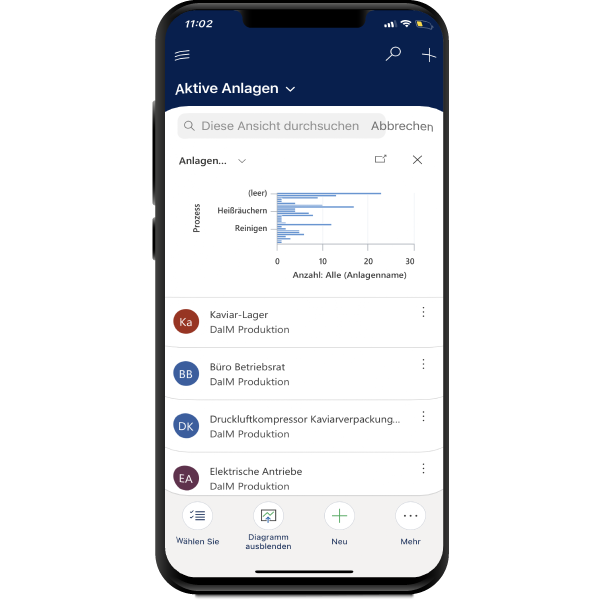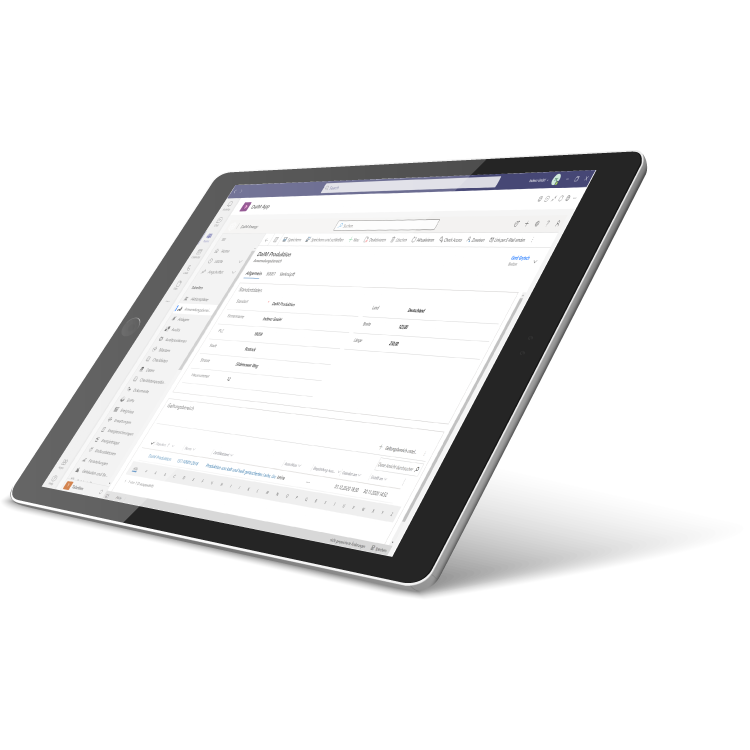Location
Standard
Buildings and Area
Process
Scope Management– Clearly define scopes and exclusions through transparent process
By defining relevant business units, building and organisational structures, standards or processes, you ensure consistent properties throughout the management system and create the conditions for your management review in real time across all locations.
The referenced data prevents incorrect entries and avoids multiple entries of the same data records in different places.


Highlights
- Clear representation of company relationships and assets
- Subdivision of location structures with buildings, work areas and rooms
- Specific features for
- Specific features for buildings, facilities and counting facilities
- Connectivity to all organisational units via Azure Active Directory
- Dynamically generated, always up-to-date organisational charts and documentation of all changes
- Direct access to jobs and contacting of job holders
- Automatic use of business units and users in Azure / Dynamics
- Agile process modelling according to common notations
- Interactive access to all process information and key figures via the process map
- Generation of individual look-up lists, option sets and structures
- Creation of relevant operating parameters for universal key figure models
- Data field mapping of parameters to existing upstream systems
- Generate implemented standards overviews with reference to other functions
Location
Definition of all locations, norms and standards relevant in the scope of application and description of the scope
Standard
Manage regulations, standards, guidelines and relevant standards by location, process or facility for application areas
Buildings and Area
Hierarchical mapping of site-related building infrastructure with all standard-specific parameters for Q-HSE-E and information security
Process
Configure process hierarchies at any level of resolution, assign process owners and directly link all process information in the app and to document management libraries
The core components of DaIM
App
A central app for communication and collaboration in Microsoft Teams. With the data-based implementation of all standard requirements, processing is possible anytime and anywhere.
Documents & Processes
Securely edit documented information and processes efficiently, approve and authorize effectively, and keep them linked to the DaIM App's protected data.
Connector
Efficient handling of existing data by connecting data sources based on hundreds of proven data connectors. Deep insights by integrating all relevant data from the enterprise across all standards.
Review
Real-time management review at the click of a mouse. Minimize the effort for recurring evaluations. Compare the results of your management reviews.
Digital Auditor & AI
AI is not only about certification readiness of your management systems, but also about changing the way your employees work. With the Digital Auditor and the Improvement Engine you transfer your management system approach into the digital age.
Audit Mining
Real-time management review at the click of a mouse. Minimize the effort for recurring evaluations. Compare the results of your management reviews.
Innovative Technologies
The functional fusion of leading collaboration tools makes DaIM unique and the most advanced management system in the world today.
Functions
Asset management
Complex asset management over the entire life cycle
Audit management
Planning, execution and reporting from a single source
Compliance management
Binding obligations and material evidence at a glance
Document management
Collaborative work and database-supported management of electronic documents
Incident management
Intuitive recording and seamless tracking of events
Hazardous materials management
Safe handling of hazardous materials through systematic processes
Maintenance management
Preventing malfunctions through efficient maintenance
Key figure management
Flexible key figure system for monitoring business processes
Context management
Identifying and anticipating the expectations of interested parties
Measures management
Centralized control of corrective and preventive measures from all sources
Means of measurement management
Mapping of means of measurement hierarchies and maintenance of means of measurement capability
Process management
Identification, visualization, documentation, control and optimization of business processes
Resource Management
Organization of competencies, authorities and tasks for management teams
Risk management
Monitoring opportunities and risks in an intelligent way
Training management
Demand-driven training organization and record keeping
Scopemanagement
Clearly define scopes and exclusions through transparent scoping